Saori Ninomiya "Requiem"
にのみやさをり 「鎮魂景」
A recent book that identifies three purposes of art:
Money – art as a store of money, or investment
Power – art as a statement of power, or status
Beauty – art as an expression of higher things
The author has a very superficial view of art. Of course some works that are now accepted as great were made for commercial reasons or to express the artist's concept of beauty, but can any of these criteria be applied to the work of van Gogh or Bosch, even Picasso or Miro?
While Saori Ninomiya's works contain beauty, if perhaps a terrible beauty, these criteria are woefully inadequate in explaining the reasons the work came into being and their intensity.
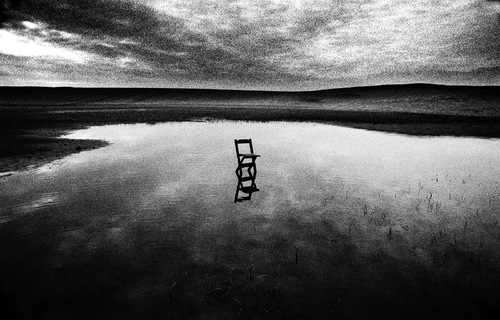
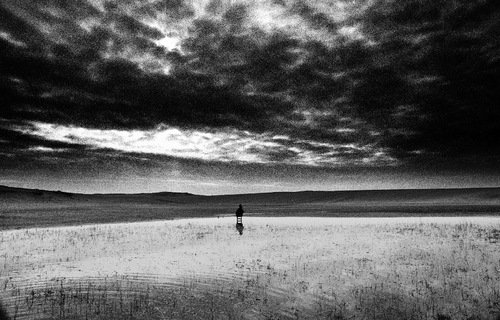

We held an interview recently, during Saori Ninomiya's exhibition at Zen Foto Gallery:
M.P. When did you begin photography?
S.N. In 1997 or so. I was suffering from PTSD (Post Traumatic Stress Disorder). I saw the world only in black and white, and I wanted to create something that showed the world as I saw it. In those days I used to take photographs of myself and others, people, places and things around me.
M.P. I cannot help noticing the marks on your arms. Is it all right to ask you about them?
S.N. Yes, there is no reason to hide anything. When I was younger and deeply troubled with PTSD, I used to cut myself, as if cutting off my limbs would somehow rid me of my burdens. I used to take a knife and even cut my body. Anything could have happened, but somehow I'm still here. Nowadays I sometimes go into a trancelike state and as I wake up I find that I have been cutting myself again.
M.P. Why did you make these photographs?
S. N. I did not try to express anything, I just had to make these photographs for myself. I had a compulsion to make a visible expression of the intensity and convulsion of my internal feelings.
S.N. At this time, in 2005 when I made these photographs, I did not see the world as most people. The horizon seemed twisted and roads contorted. I wanted to create something that would also fix a horizon for me.
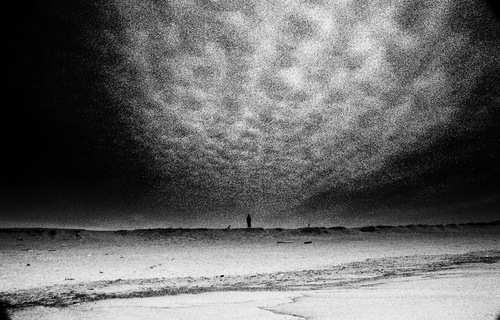
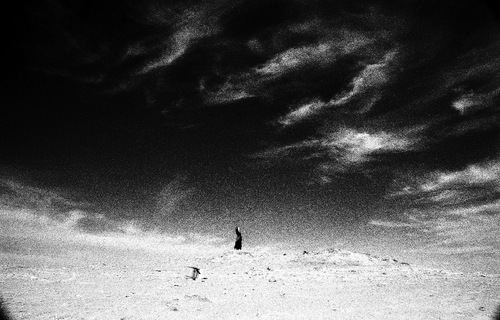
M.P. When did you start writing poetry?
S.N. As a small child I started to write little pieces, stories, making things up. Often it was about how I would like to have a normal life, normal parents who would love me.
M.P. What does the title mean – in Japanese: “Chiheisen II – Chinkonkei”
S.N. Literally Horizon II – View of a Requiem. This does not necessarily mean requiem for a death, but a reference to a spirit inside of me. A spirit that had troubled me and I wanted to put it behind me.
M.P. How do you feel about the exhibition? Tell us about the works.
S.N. The exhibition shows prints in three sizes; Large inkjet prints (approx 1.1metre x 1.5 metre), 11”x14” silver gelatin prints and a special small silver gelatin print (5”x7”) to sell with the photobook. When I first made the photographs, I made a silver gelatin print. I used this as a master print to scan the image for the large inkjet prints. The silver gelatin prints are modern prints made recently.
S.N. I am happy with the exhibition. Both the large inkjet prints and silver gelatin prints each say something different. I'm glad we made the exhibition like this.
M.P. When I look closely at the large inkjet print, the sky looks very grainy, but the small figure on the horizon seems very sharp. Did you digitally adjust the image?
S.N. I made no adjustment to the image.
M.P. It is quite remarkable and effective. The result is extremely dramatic, and indeed moving. When I look at the modern print of the same image I can also see faintly the face of the figure is looking toward us.
S. N. Yes, probably because the figure in the original print was printed darkly, whereas the modern print is printed closer to the negative for the figure.
M.P. Tell me about printing the images. They are not simple, are they?
S.N. Because the purpose of the photographs and the prints was to express my inner turmoil, the printing is also very personal. Of course I know how I want the result to look and substantially achieve it, each print turns out differently. Three were particularly difficult, especially the ones where I wanted the sky to have a particular character.
M.P. What have the photographs meant to you?
S.N. The process of expressing my internal state in a visible form has certainly helped me. It's not just that time has passed and that I am older. Producing these works was something I simply had to do and was an essential part in healing myself.

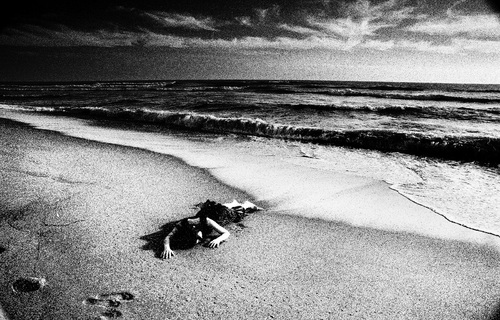
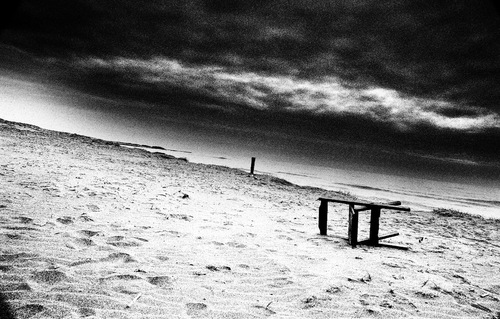
Related Publication: